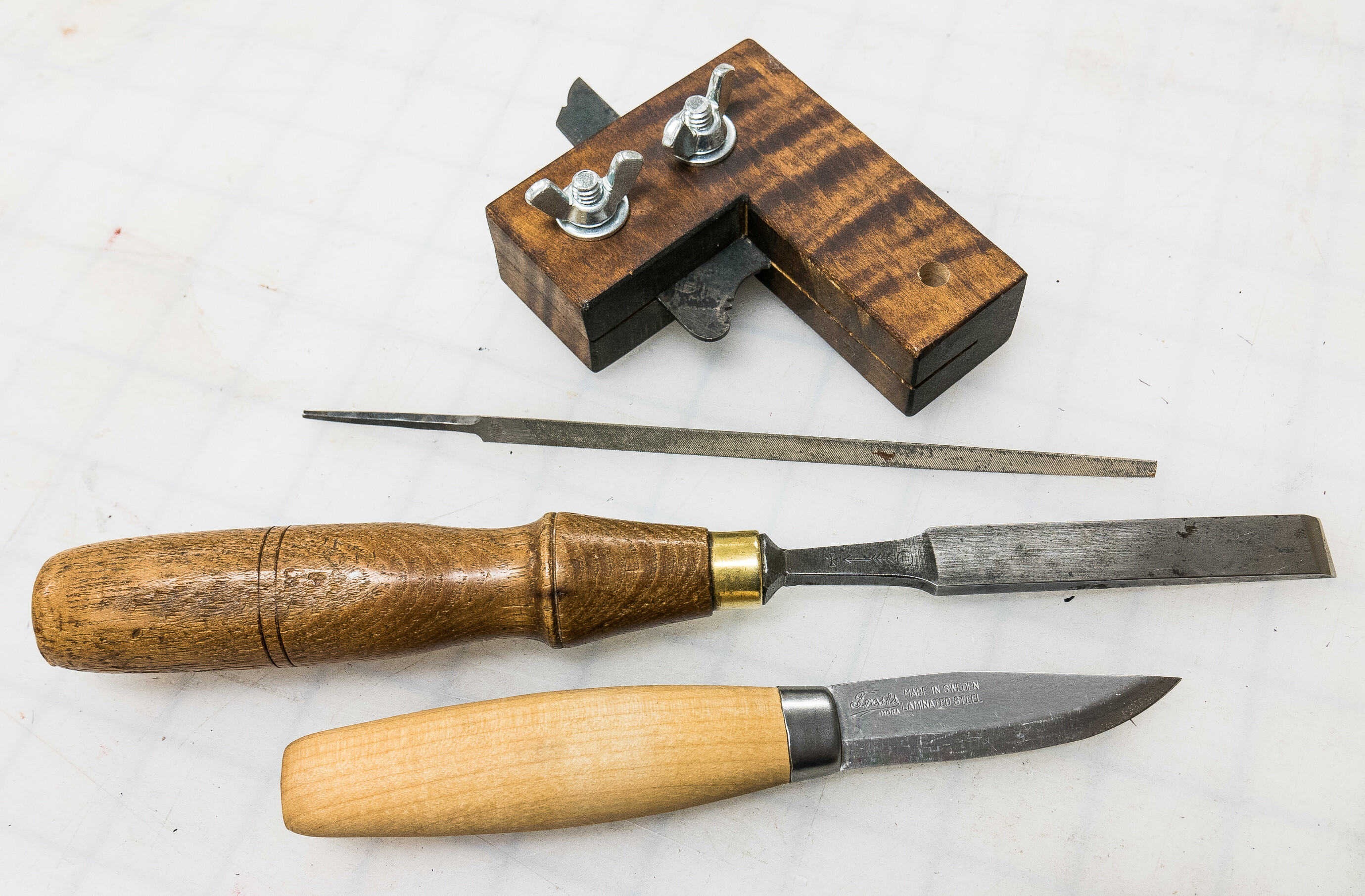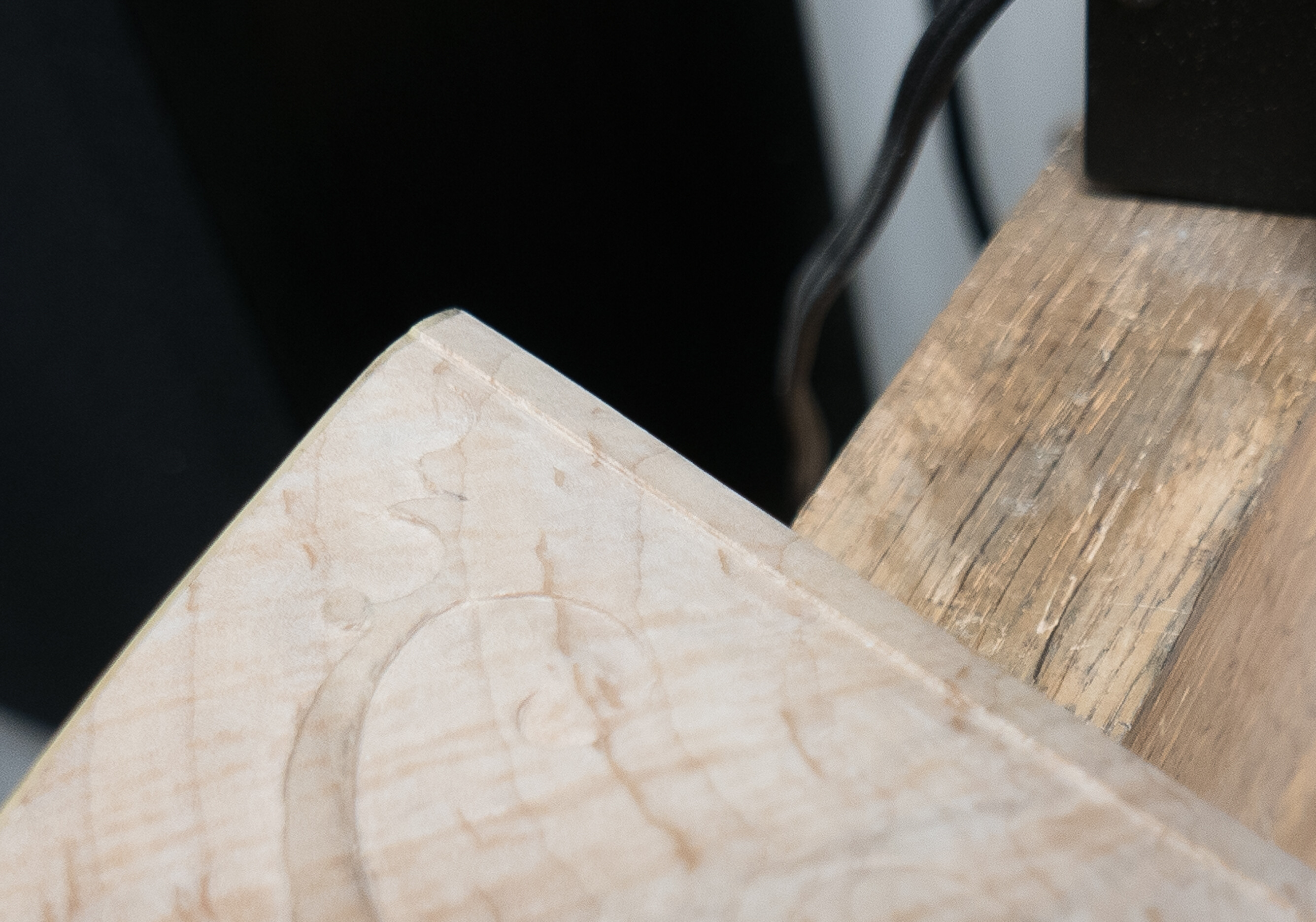


One important note about the finish produced by the scratchstock. Since you are holding the scraper blade parallel to the curl in the stock, the scraper blade with ride up and down on the hard and soft curl producing a ripple effect. I know of no way to avoid this with a scratchstock. The ripples are a consequence, and an indication, of the method used to shape the forearm. Other places that you use a scraper, you can hold the scraper diagonal to the curl to avoid leaving ripples. Ripples in a highly figured stock are part and parcel of shaping and finishing with scrapers, but in most other places it can be minimized. It just can’t be minimized where a scratchstock is used.
